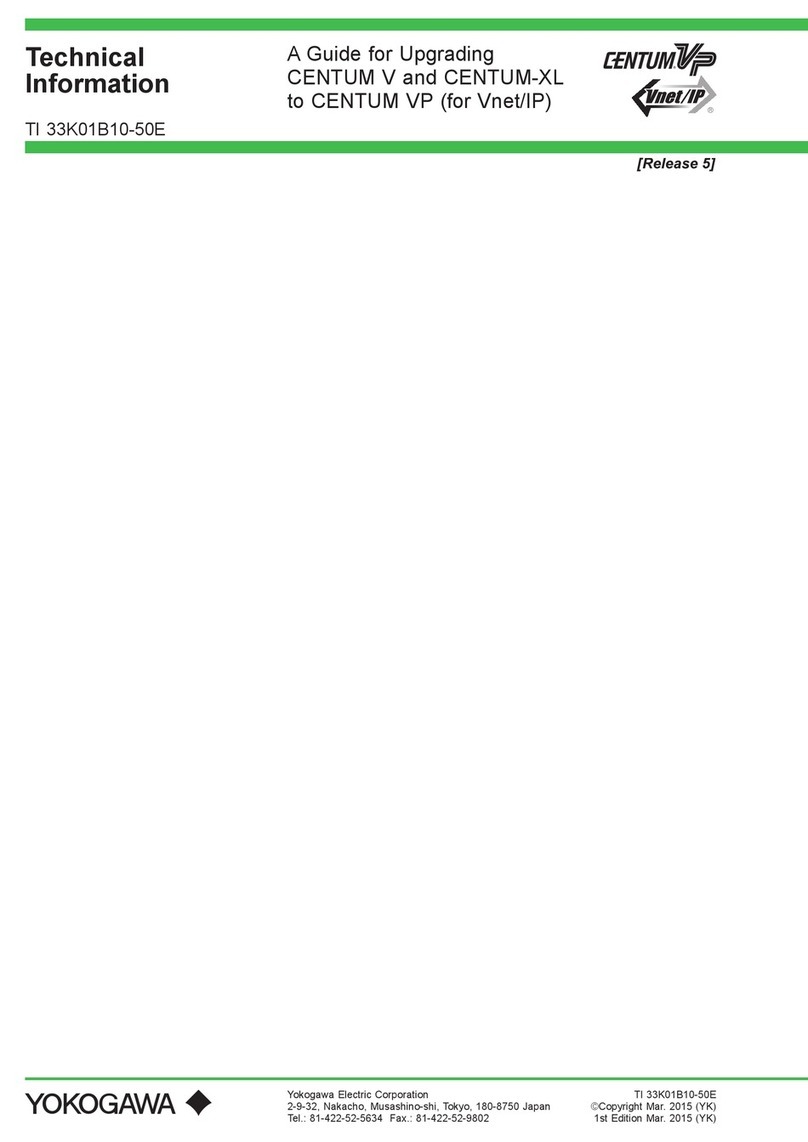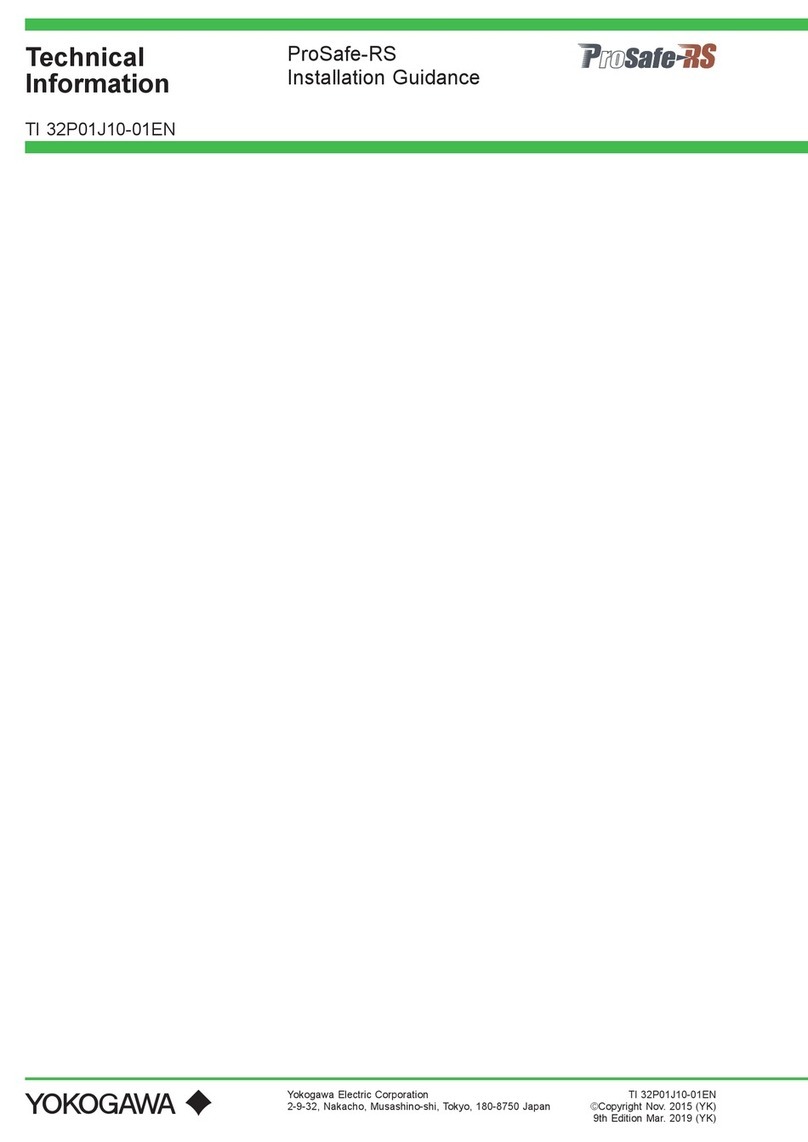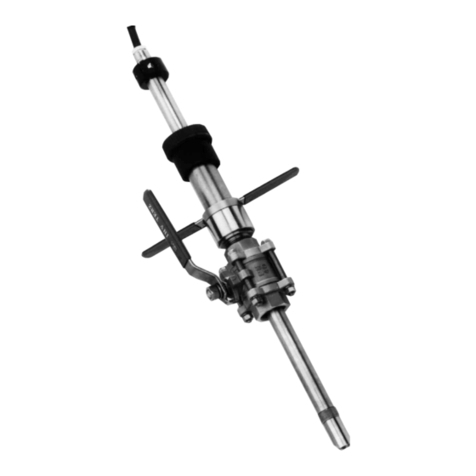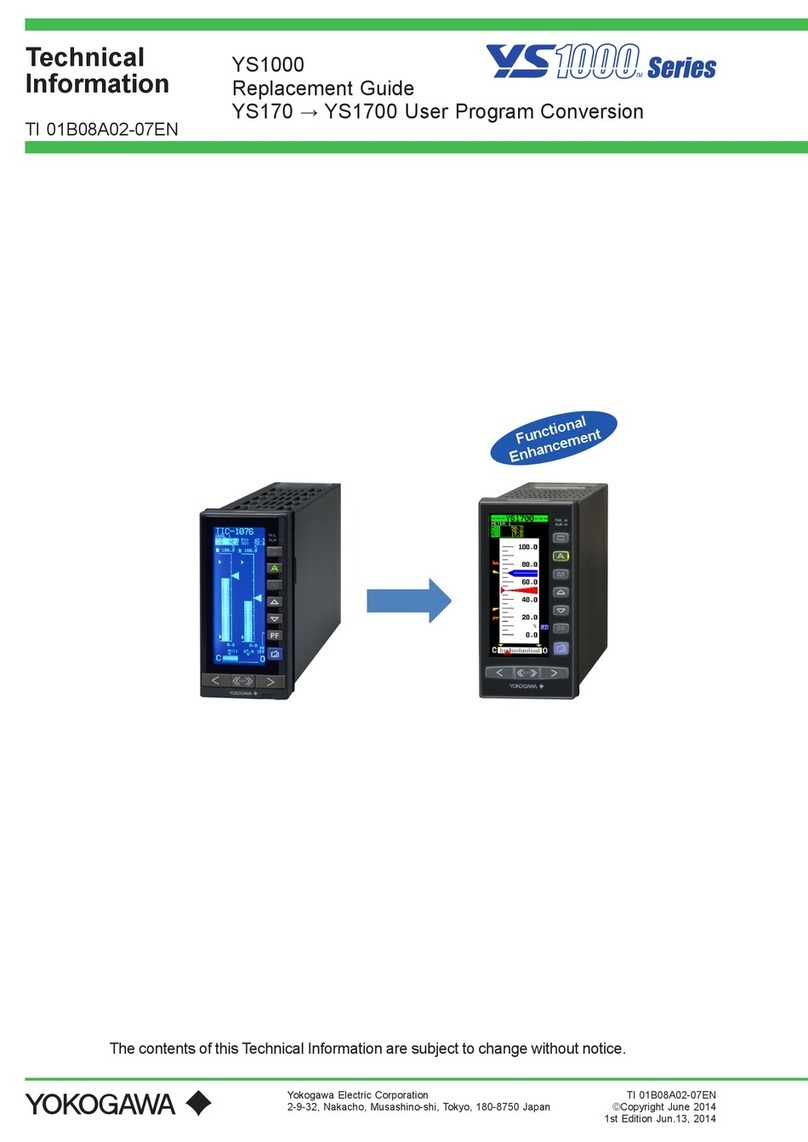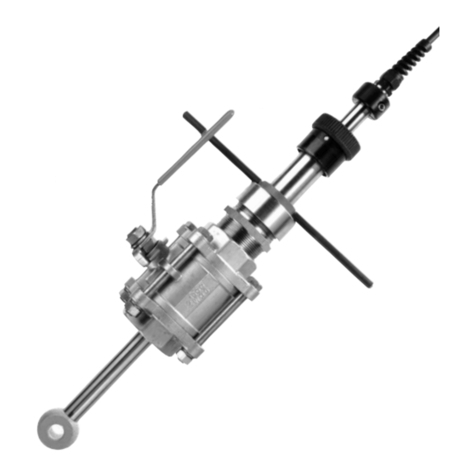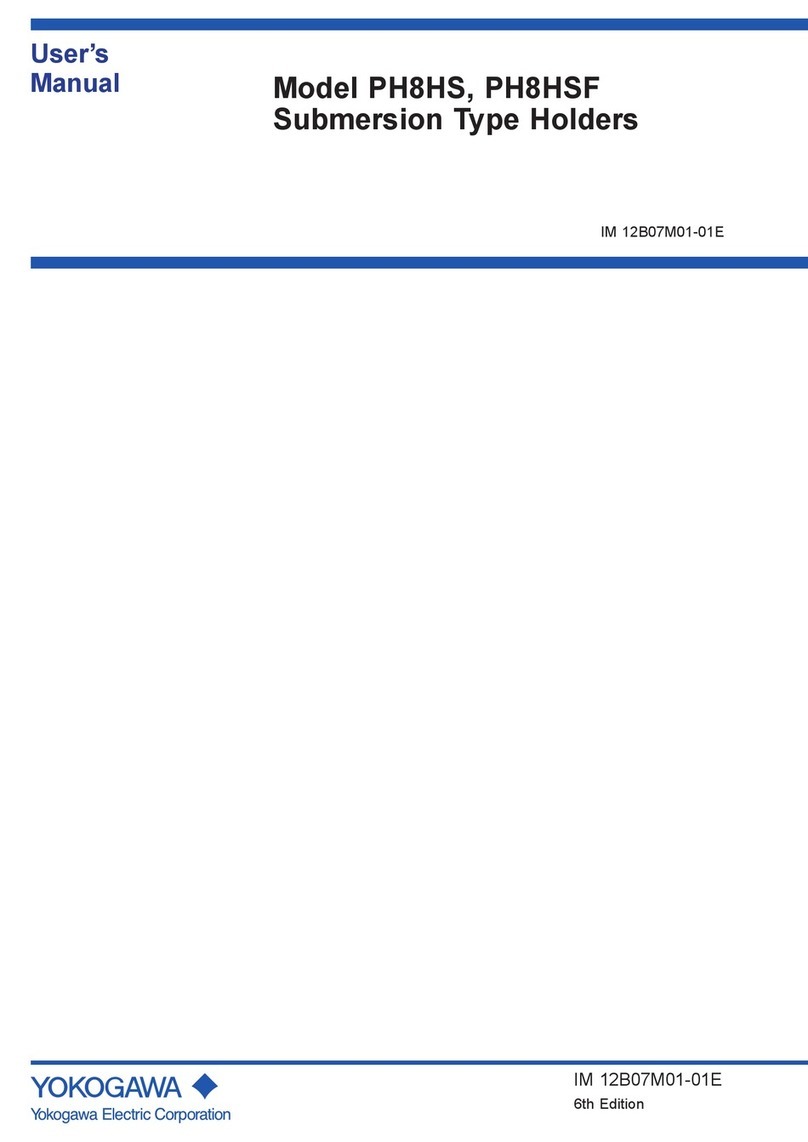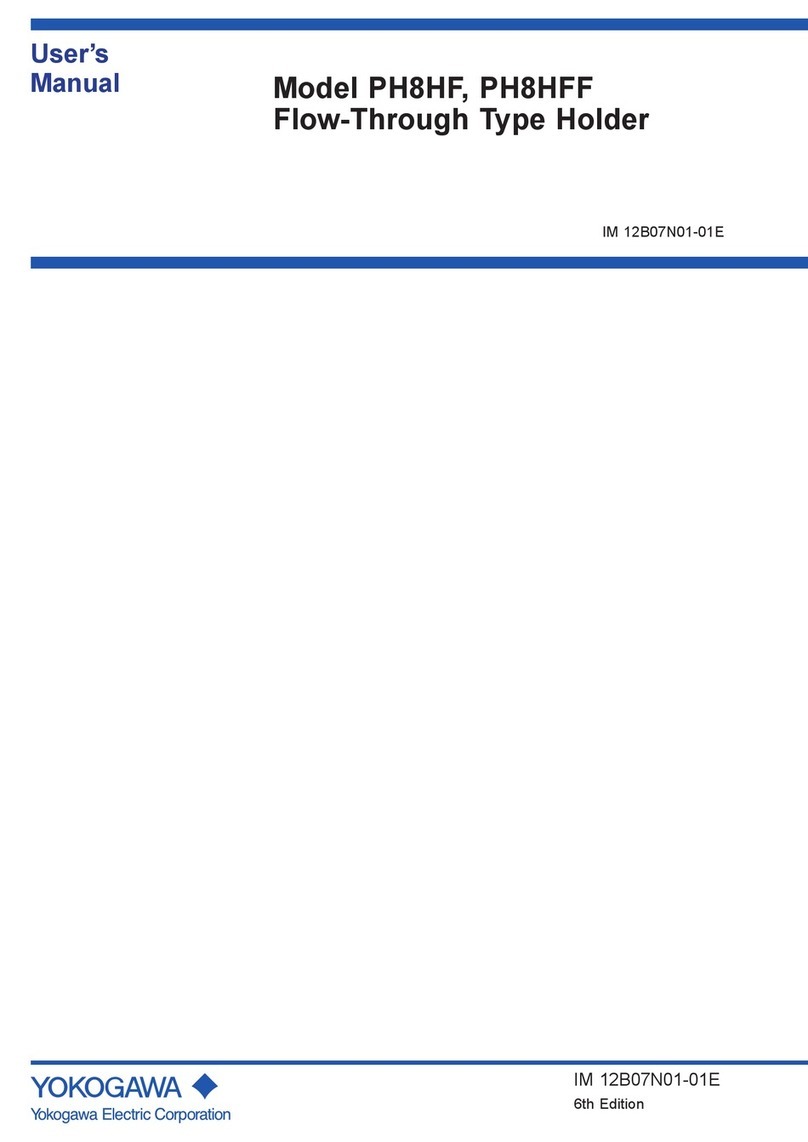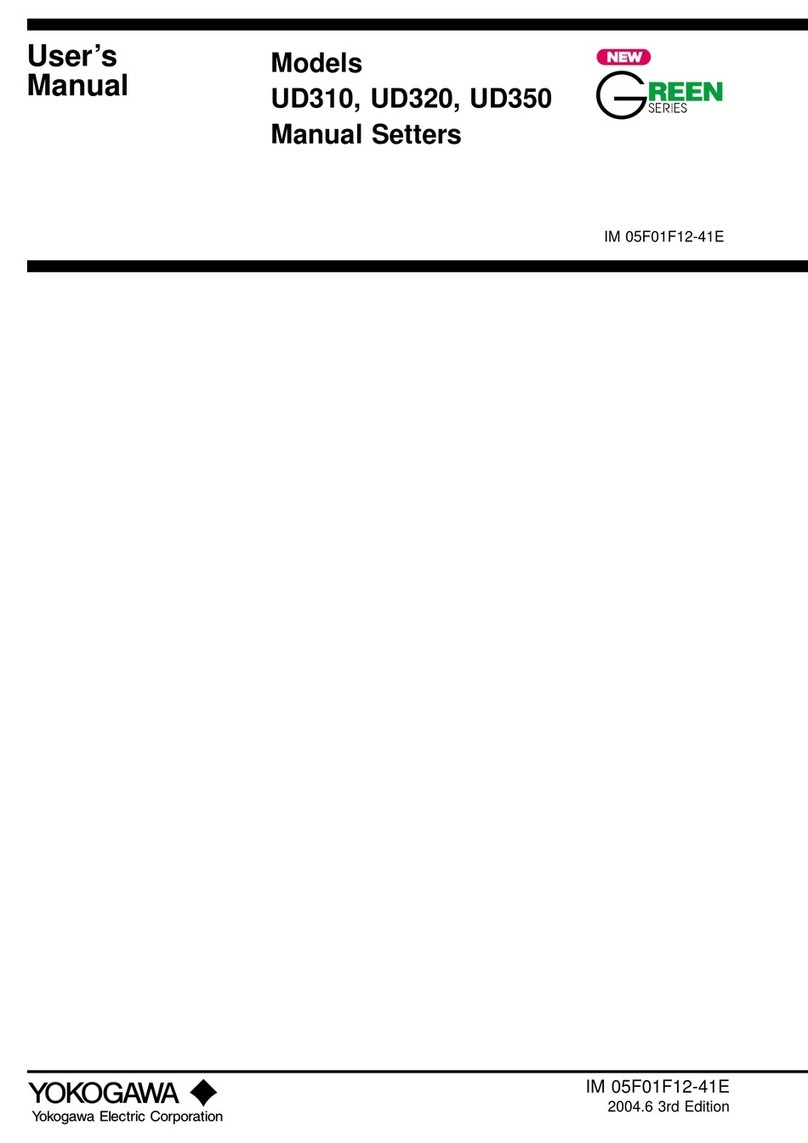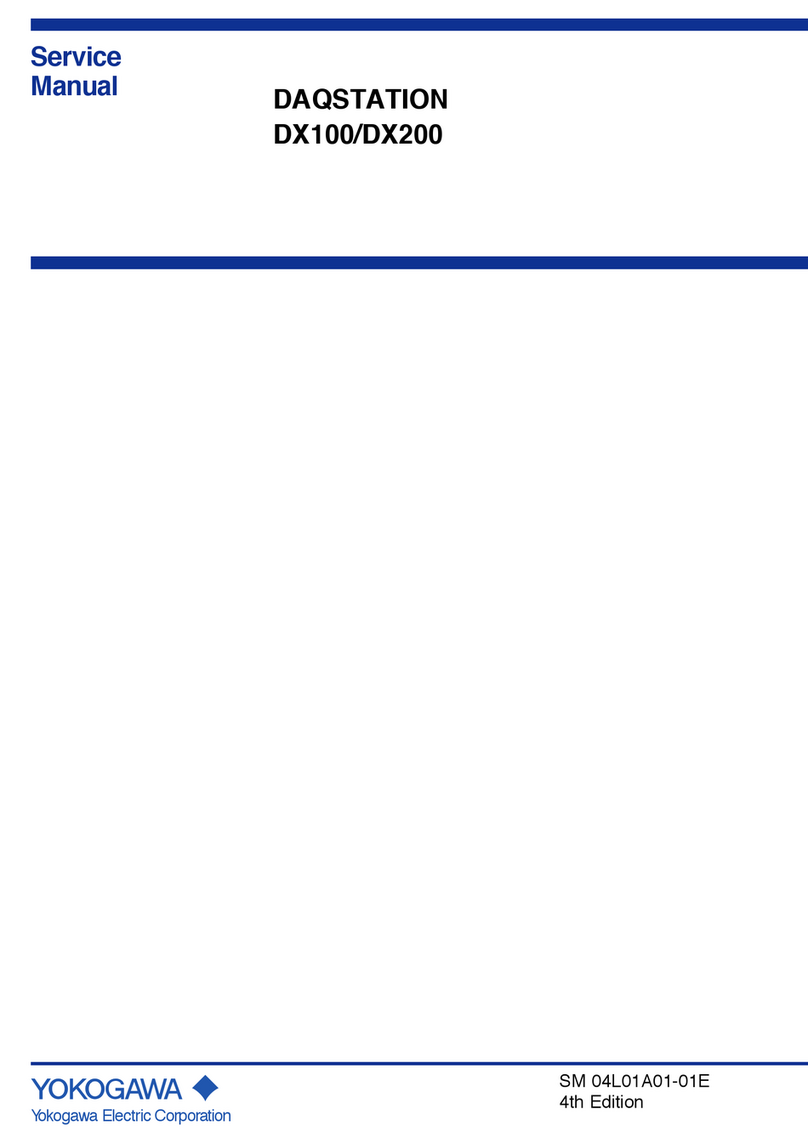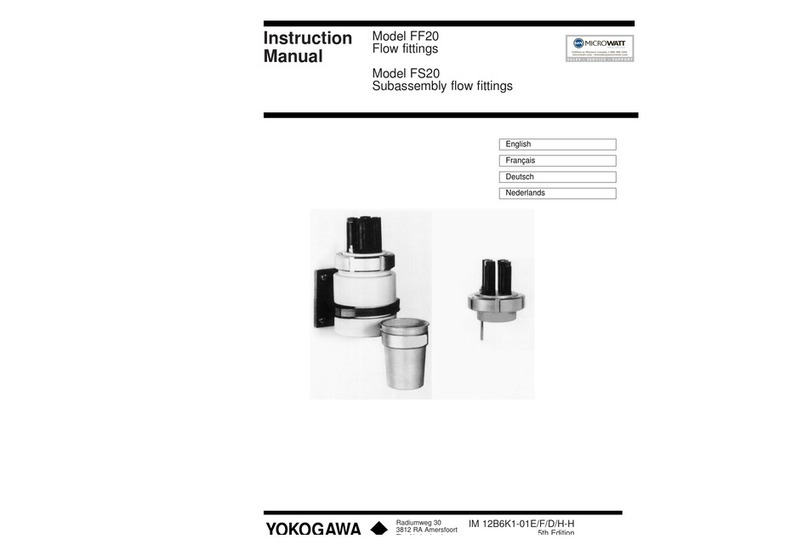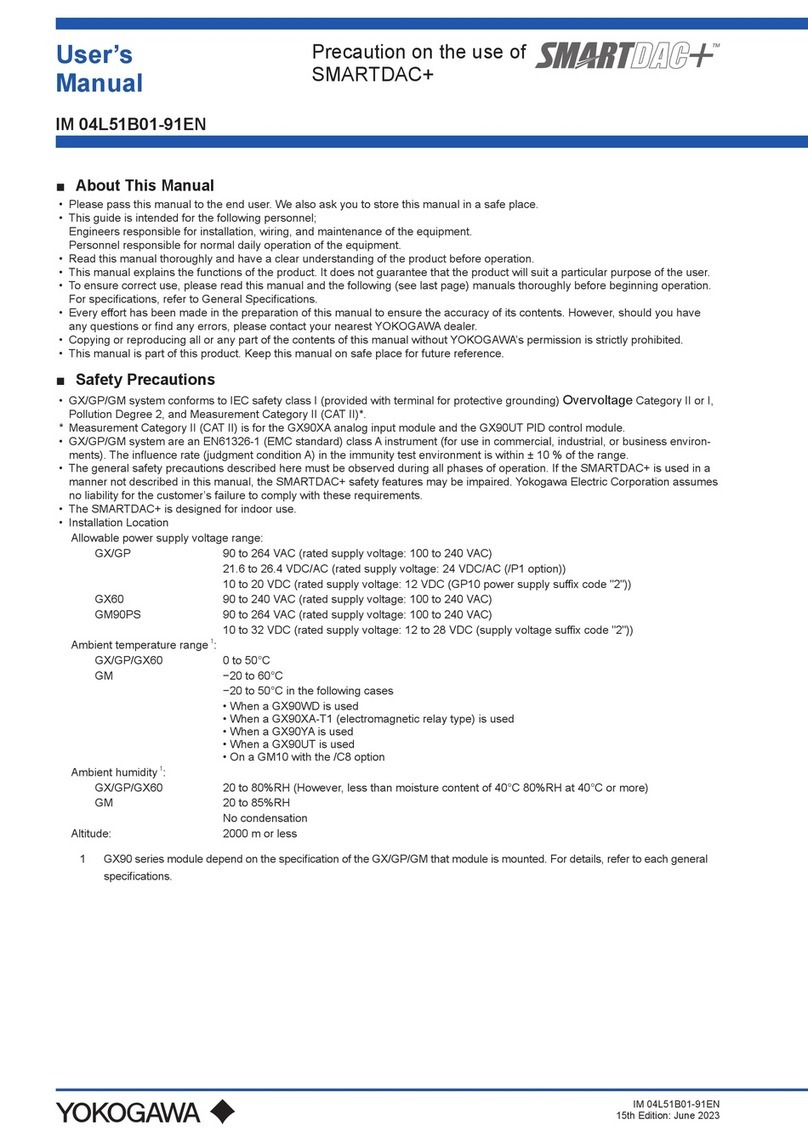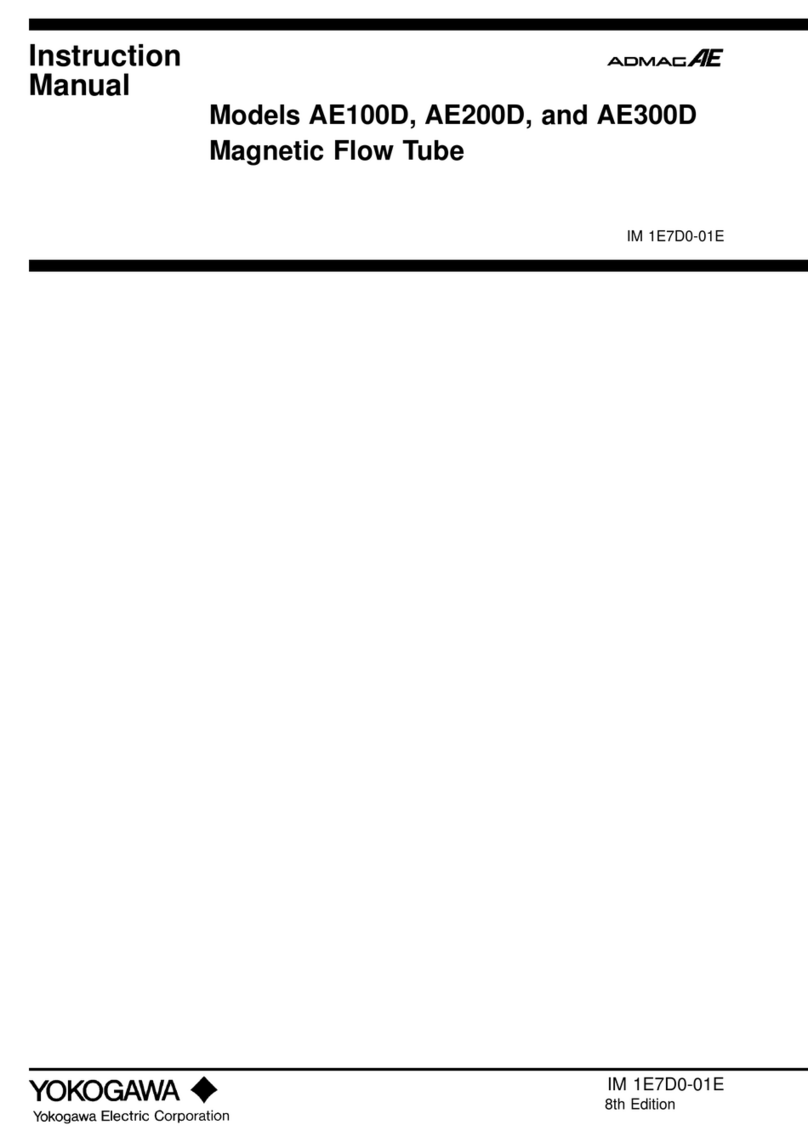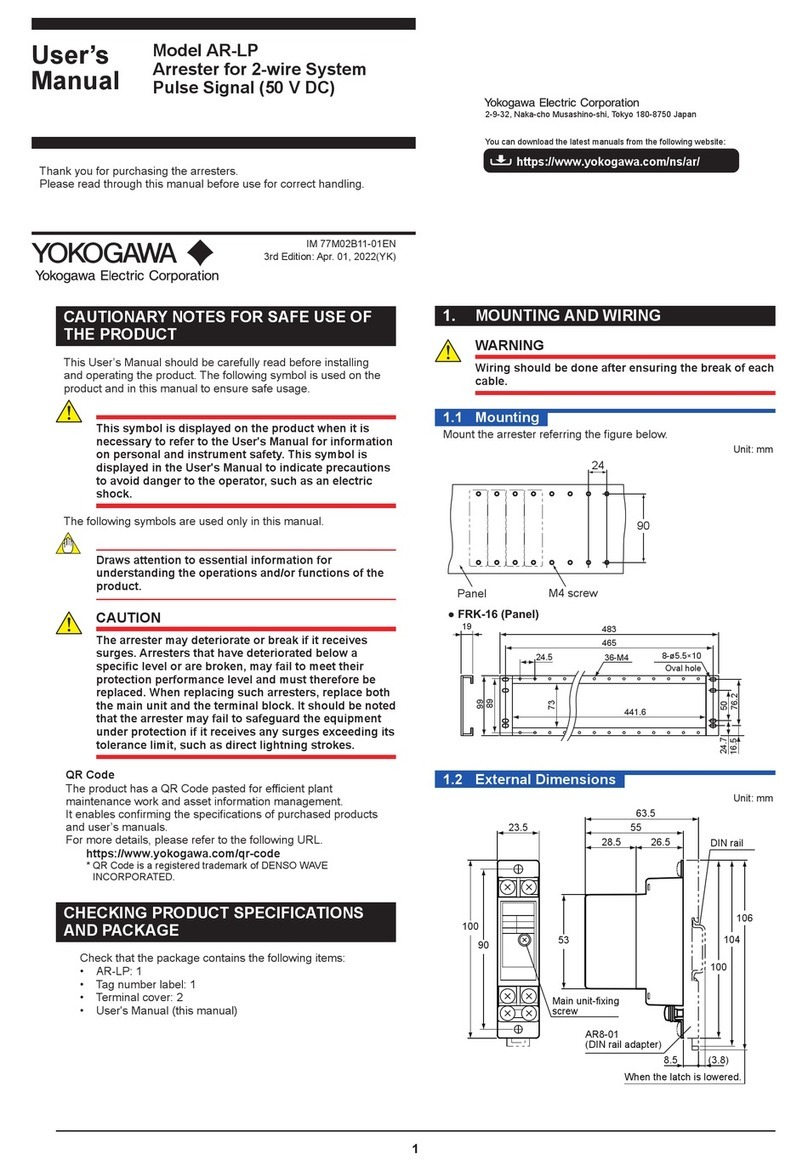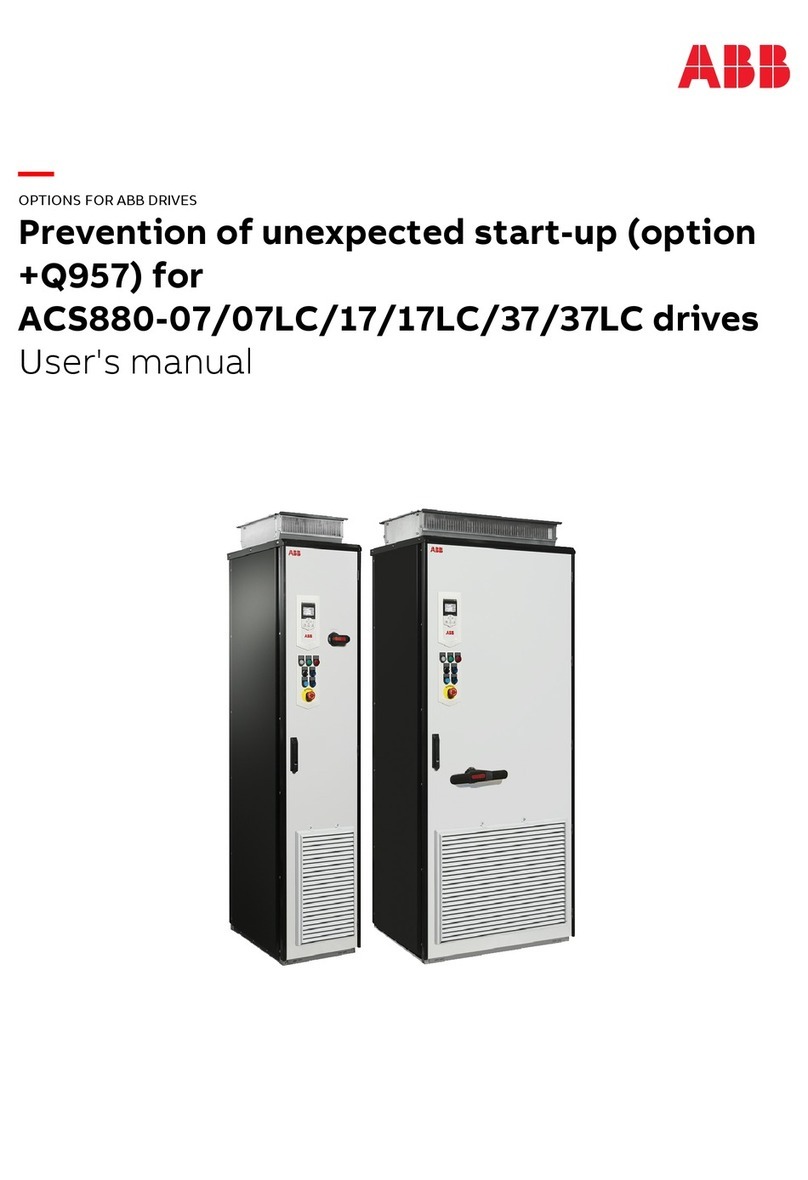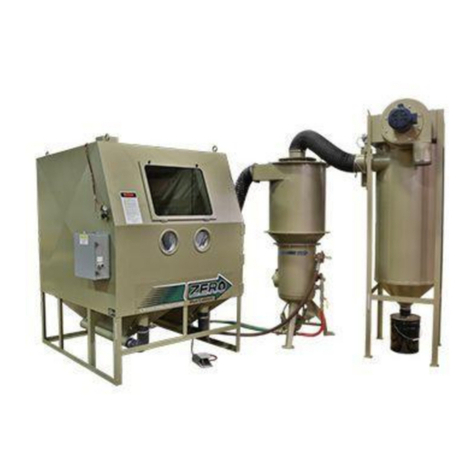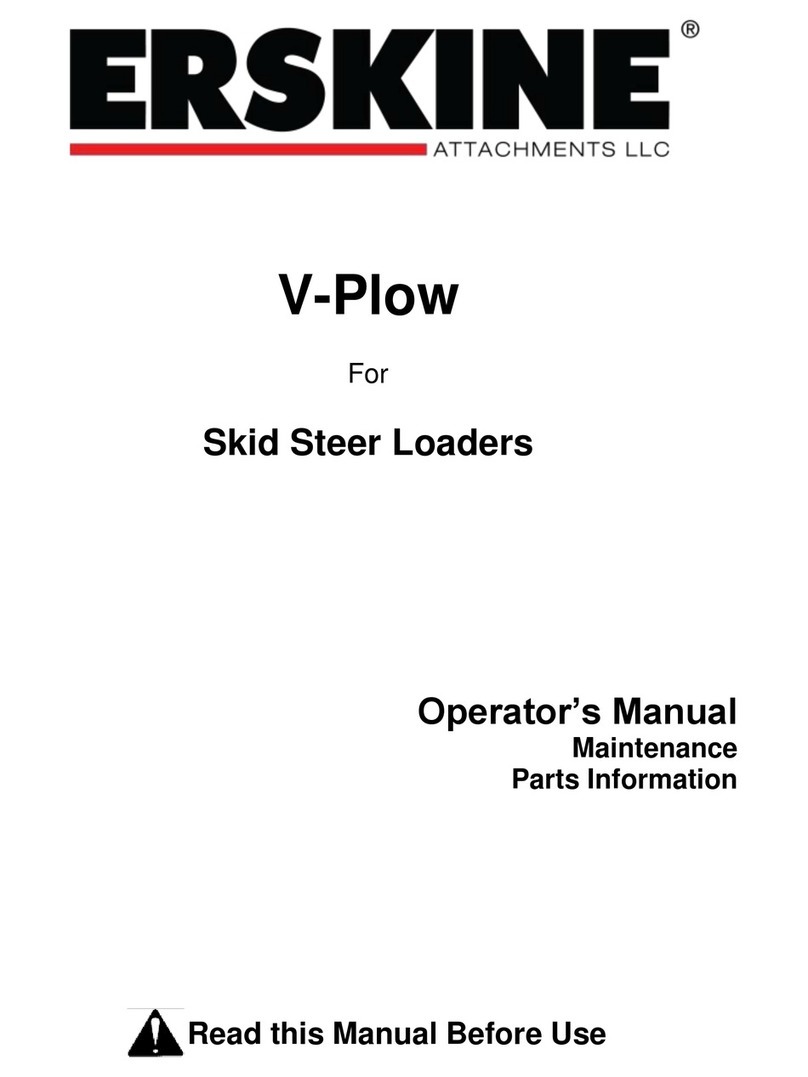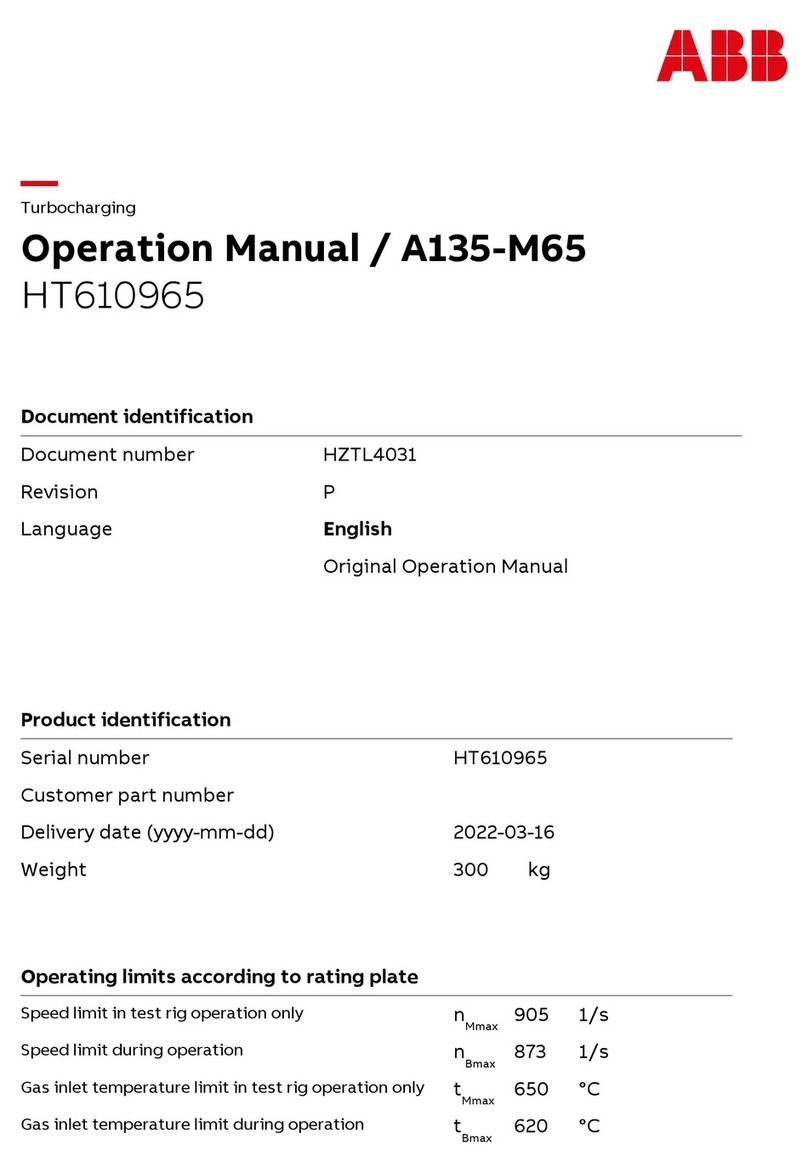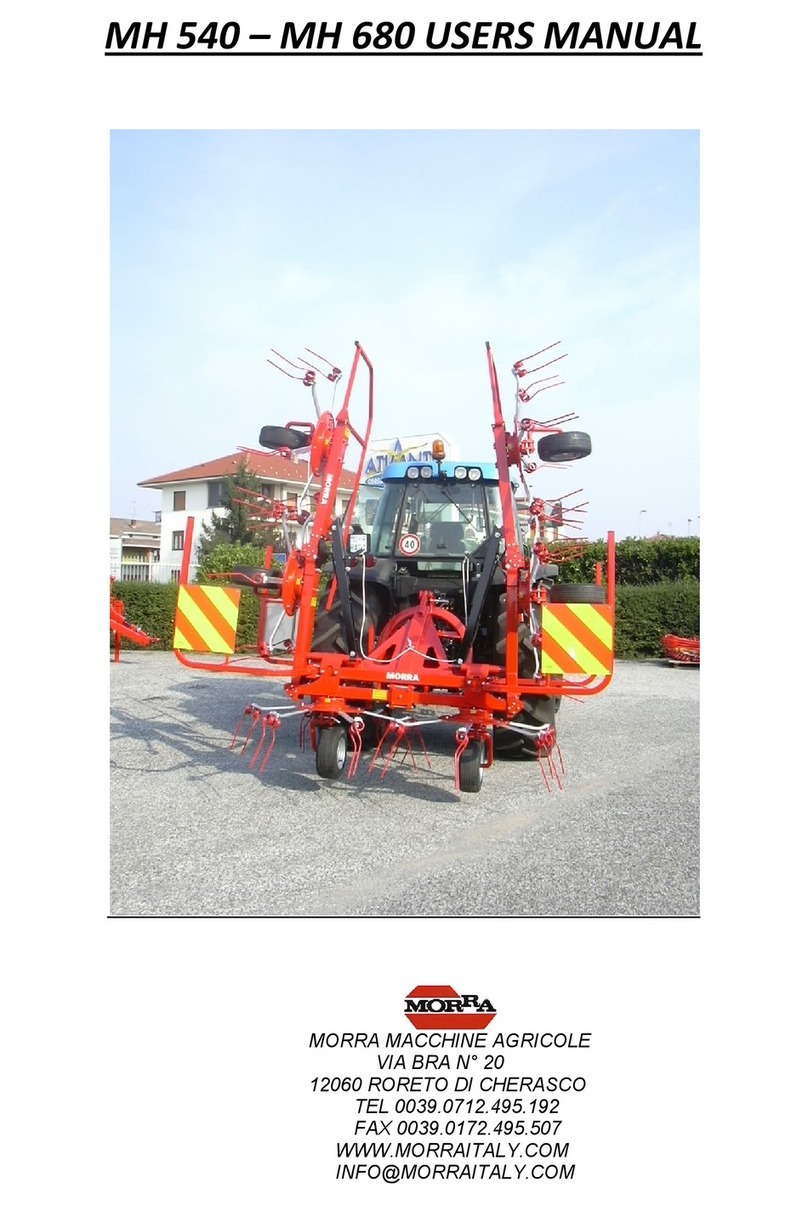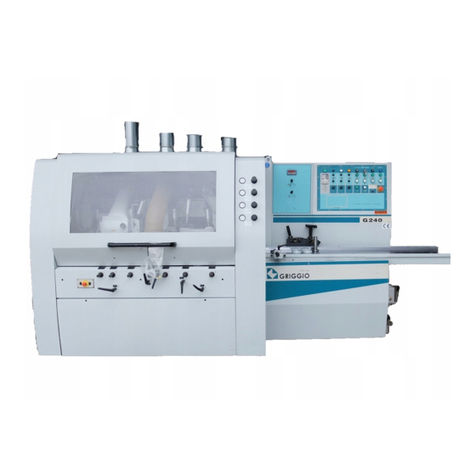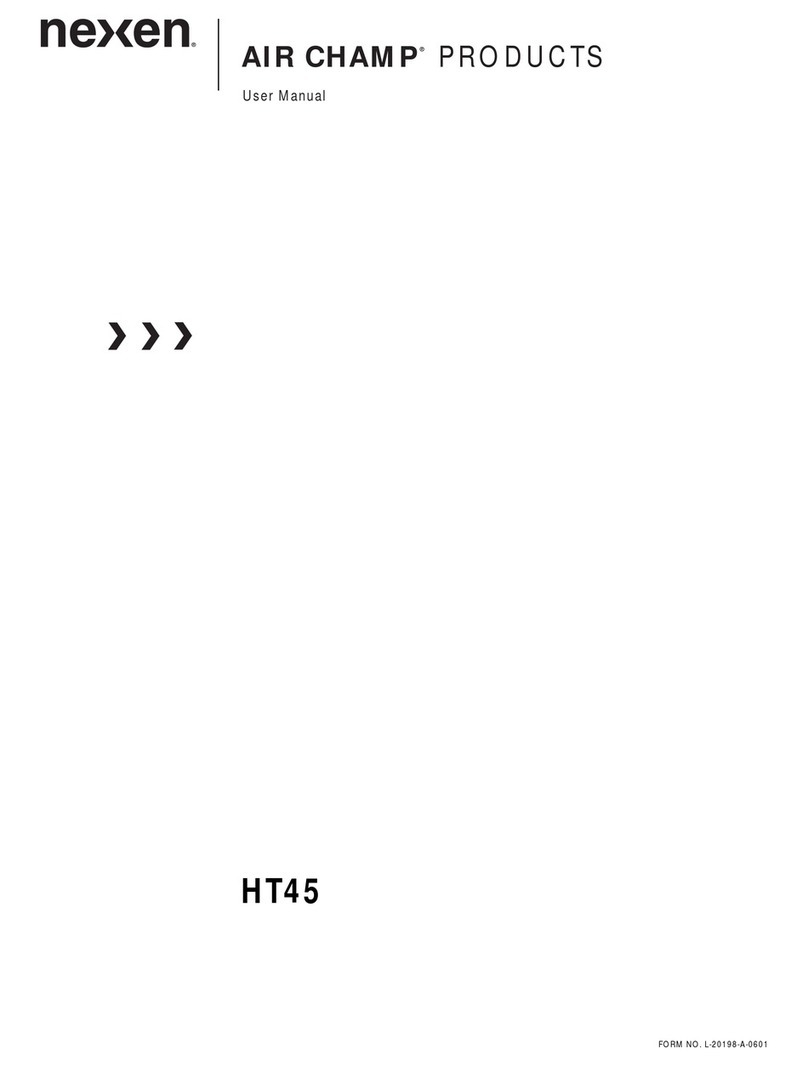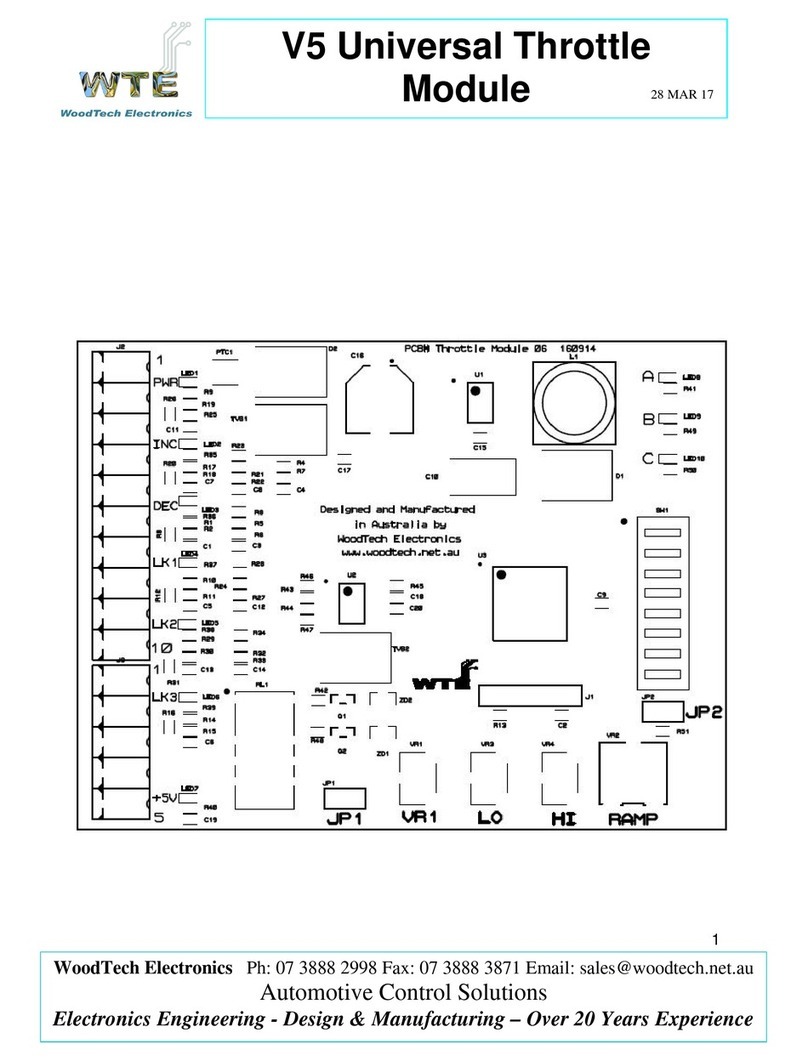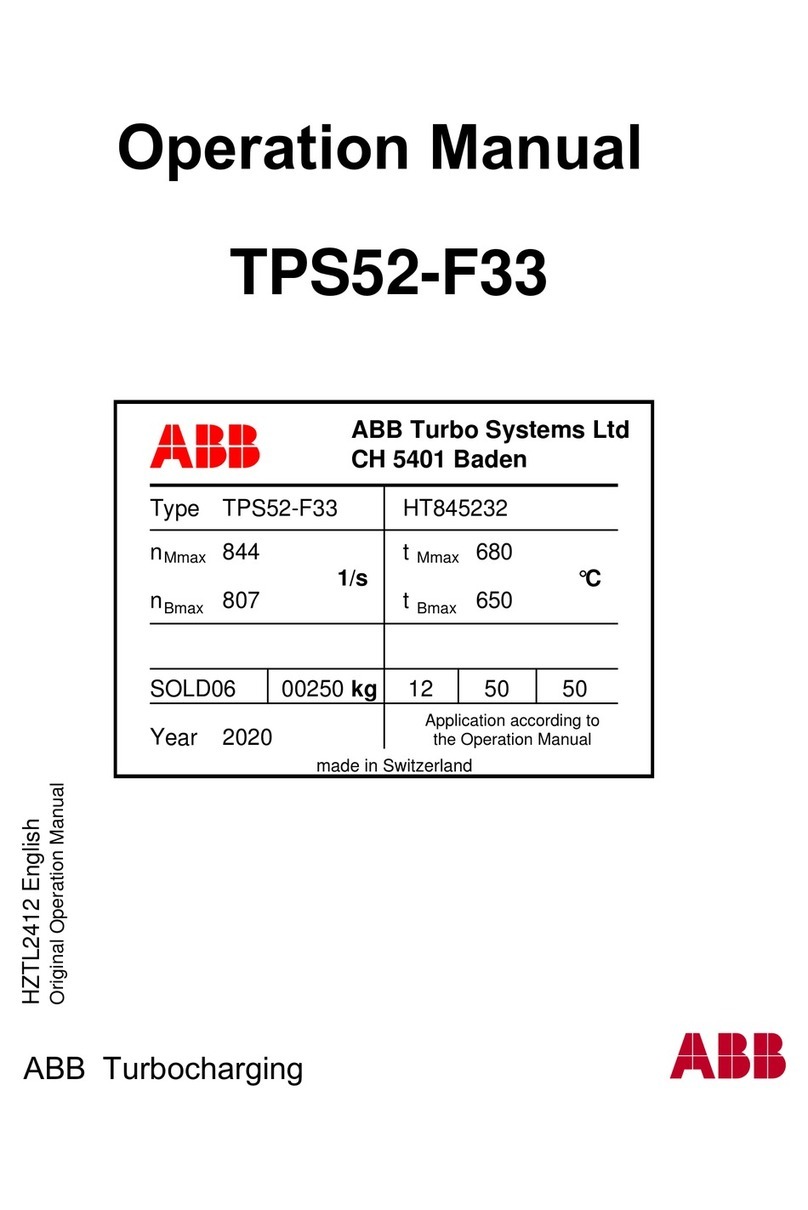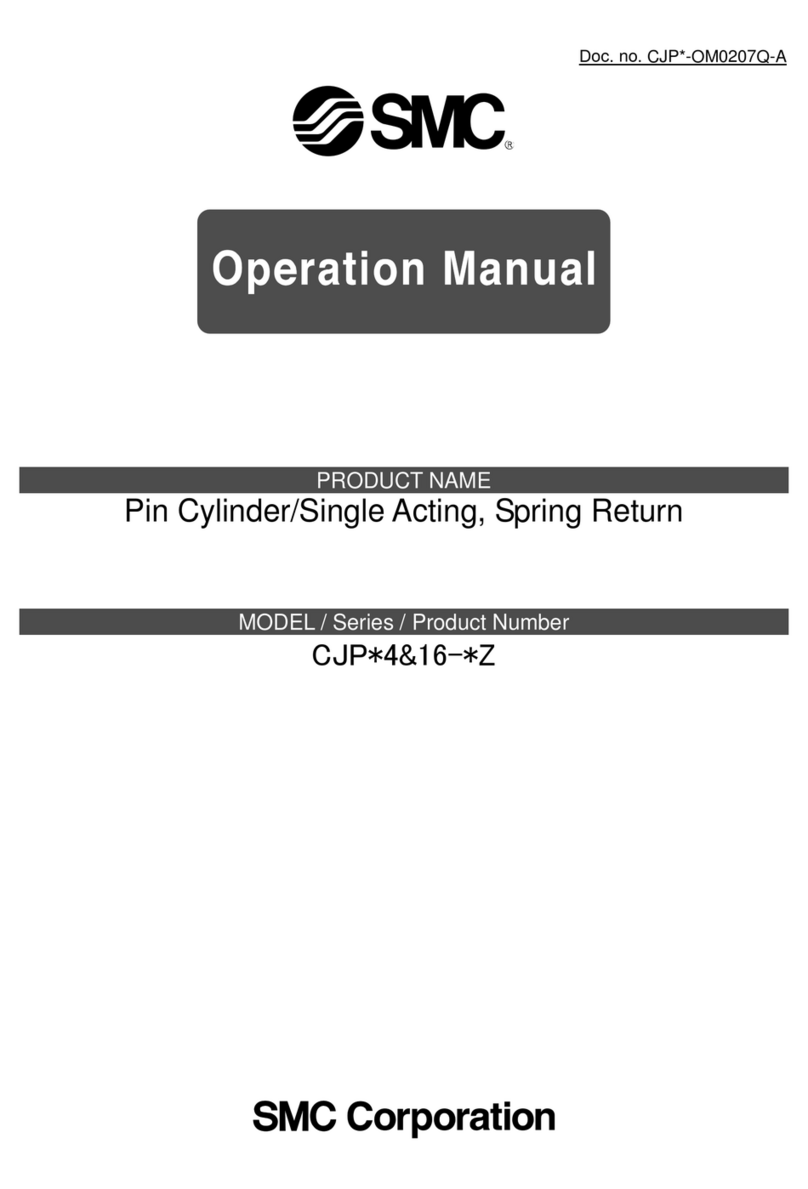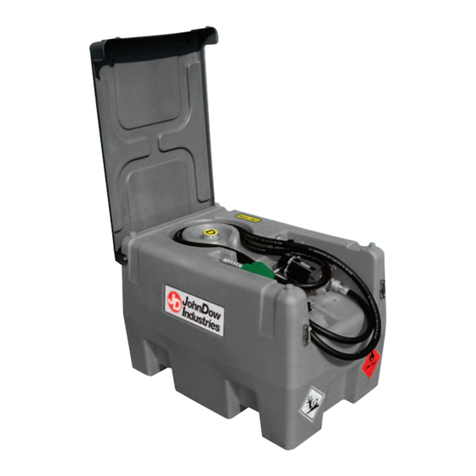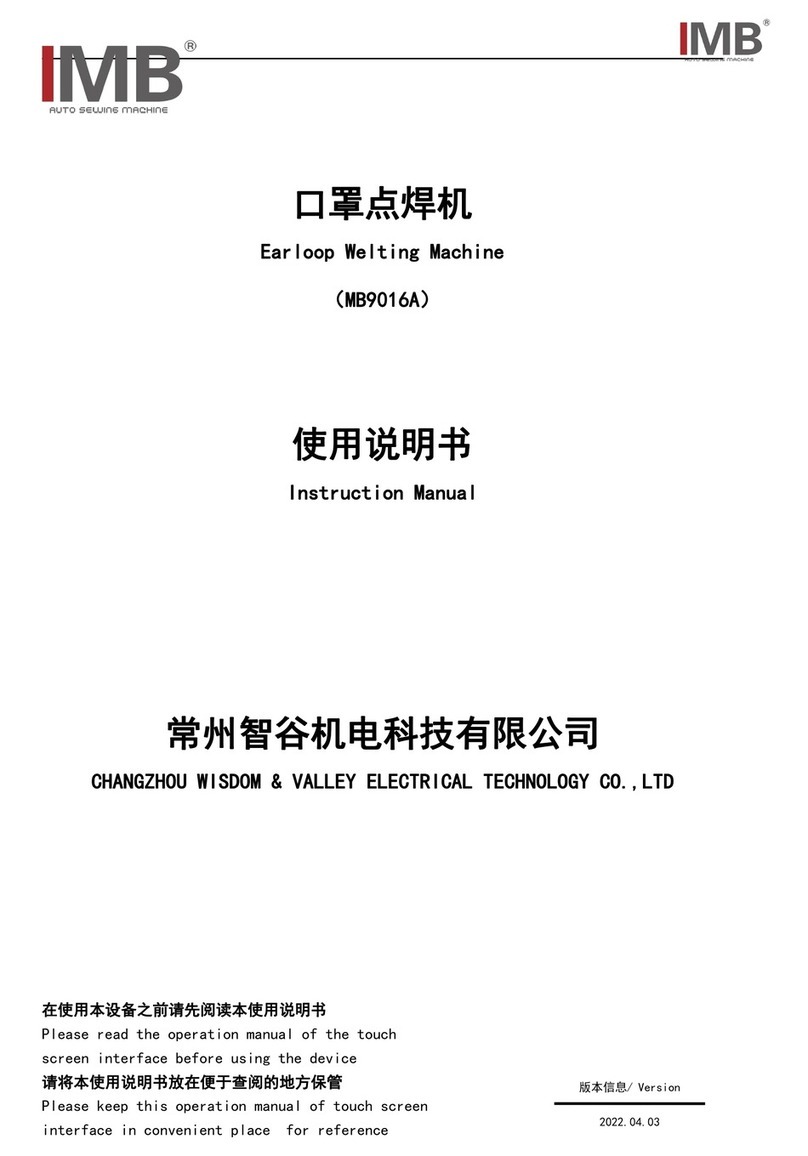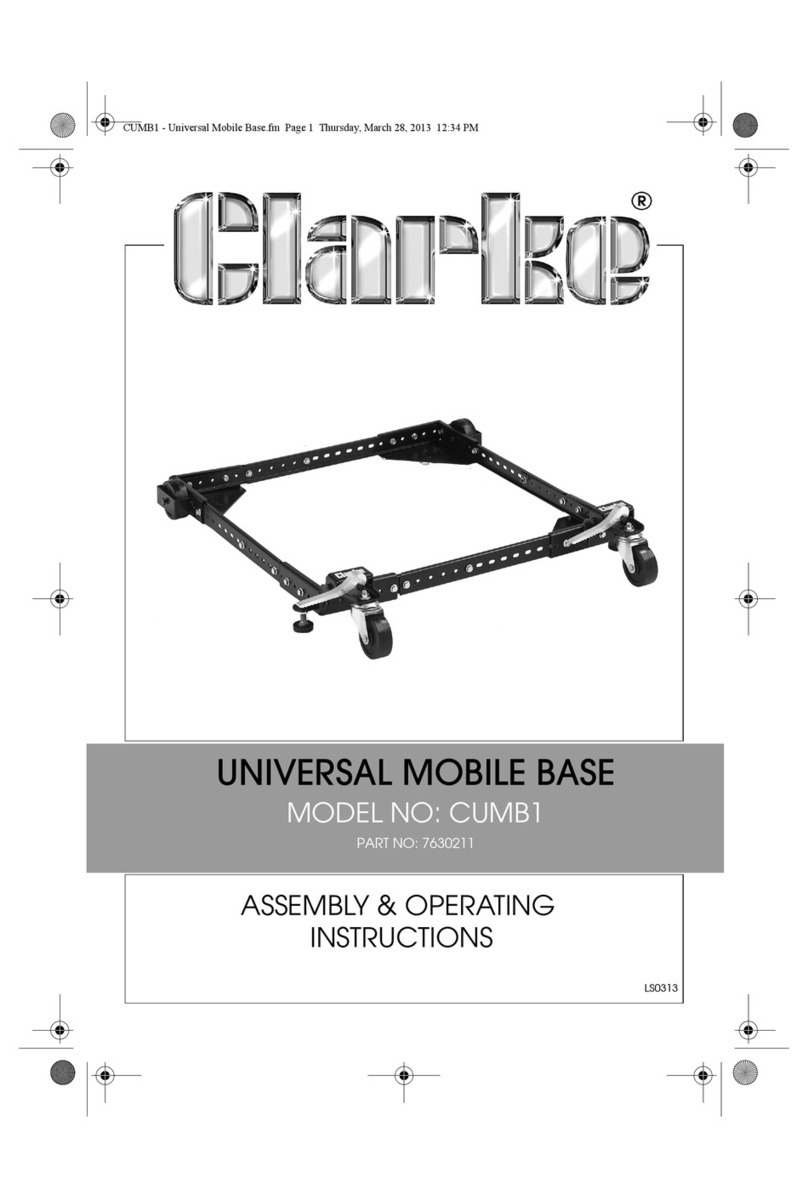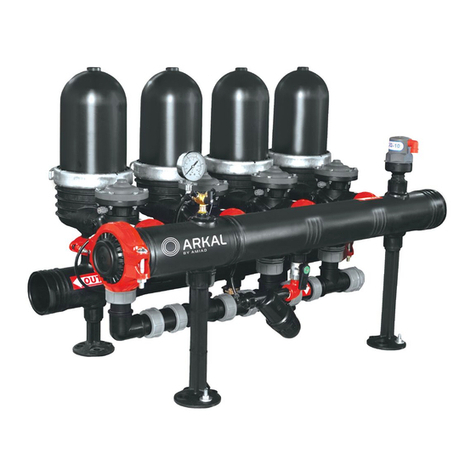
CAUTION
●Do not use output-2 for the isolated single-output
type.
●The power line and input/output signal lines should
be installed away from noise-generating sources.
Other wise accuracy cannot be guaranteed.
●Make sure to earth ground the ground terminal
through minimum resistance. The length and
thickness of the grounding cable should be as
short and thick as possible. Directly connect the
lead from the ground terminal (terminal no. 8) of
the product to the ground. Do not carry out daisy-
chained inter-ground terminal wiring.
●The product is sensitive to static electricity;
exercise care in operating it. Before you operate
the product, touch a nearby metal part to discharge
static electricity.
●If the ambient temperature is 50 °C or more, please
use the cable that the rated temperature is 70 °C or
more.
4. MAINTENANCE
The product starts running immediately when the power is turned
on; however, it needs 10 to 15 minutes of warm-up before it
meets the specied performance.
4.1 Calibration Apparatus
• A voltage and current generator (YOKOGAWA GS200 or the
equivalent)
• A digital multimater (YOKOGAWA 7561 or the equivalent)
• A precision resistor of 250 Ω ± 0.01%, 1 W
4.2 Calibration Procedure
1. Connect the instruments as shown below. First adjust the
output-1 signal and then the output-2 signal.
1011
3 2 1
4
56
789
External receiving resistor
(Shunt resistor)
for current input
1110 8
L+ N- GND
Ri
1
3
2
5
Ro -
+
-
+
-
+
7
9
Ro
Ri: External receiving resistor
for current input
(See chapter 3.)
Power supply
Output-2
Input
Output-1
Ro: 250 Ω
for current output
DC voltge/
current
standard
Digital
multimater
Digital
multimater
2. Use the DC voltage/current standard and apply input signals
equivalent to 0, 25, 50, 75, and 100% of the input span to the
product.
3. Check to see the corresponding output voltages are 0, 25, 50,
75, and 100% respectively and within the specied accuracy
rating. “R” is used for current output.
• If the output signals are out of the accuracy rating range,
adjust the output signal level using the zero and span
adjustment volumes on front face of the product.
Zero-adjustment volume
Output-1
Span-adjustment volume
Zero-adjustment volume
Output-2
5. SAFETY AND EMC STANDARDS
The following will be acquired.
Safety:
IEC/EN 61010-1 compliance (CE)
IEC/EN 61010-2-030 compliance (CE)
CAN/CSA-C22.2 No.61010-1 (CSA)
CAN/CSA-C22.2 No.61010-2-030 (CSA)
UL61010-1 (CSA NRTL/C)
UL61010-2-030 (CSA NRTL/C)
Overvoltage category: II
Pollution degree: 2
Measurement category: O (other)
Rated power voltage: 15-30 V DC (±10%) 2.4 W or
100-240V AC/DC (±10%) 50/60 Hz
2.6 W 6.7 VA
Rated voltage (Input signal) : ±25 V DC
Rated voltage (Analog output signal): −10 to +10 V DC,
0 to 20 mA DC
Rated transient overvoltage: 1500 V (*)
* This is a reference safety standard value for the
measurement Category O. This value is not necessarily
a guarantee of instrument performance.
CAUTION
This instrument is for Measurement Category O
(other). Do not use it for measurements in locations
falling under Measurement Categories II, III, and IV.
Internal Wiring
Outlet
III T
O
II
IV
Measurement
category
Description Remarks
O (other) For measurements
performed on circuits not
directly connected to MAINS.
II CAT.II For measurements
performed on circuits directly
connected to the low-voltage
installation.
Appliances,
portable
equipments,
etc.
III CAT.III For measurements
performed in the building
installation.
Distribution
board, circuit
breaker, etc.
IV CAT.IV For measurements
performed at the source of
the low-voltage installation.
Overhead
wire, cable
systems, etc.
EMC standards:
• CE:
EN 61326-1 Class A, Table 2
EN 61326-2-3
* The instrument continues to operate at a measurement
accuracy of within ±20% of the range during testing.
EN 55011 Class A, Group 1
EN 61000-3-2
EN 61000-3-3
• RCM:
EN 55011 Class A, Group 1
• KC:
Electromagnetic wave interference prevention standard,
electromagnetic wave protection standard
CAUTION
Caution to comply with EMC standards: When
operating this instrument by external power supply,
use an independent power unit conforming to CE-
marking. Be sure to use the lightning arrester to
comply EMC standards.
Note: When option code /C0 or /FB is specied, the conformity to
the safety and EMC standards is excluded.
3IM 77J01H12-01E 6th Edition
